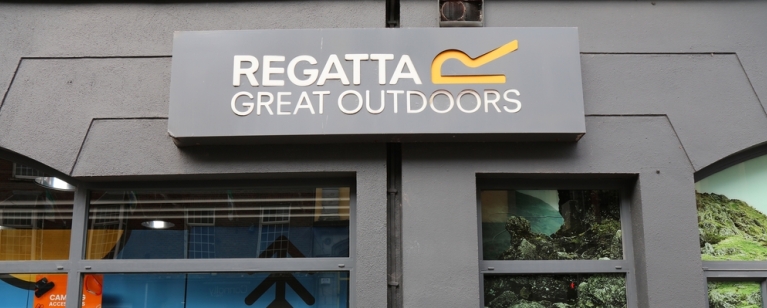
In 2021 ETI published the Corporate Transparency Framework (CTF) which requires full ETI company members to publicly report against six minimum requirements relating to their human rights due diligence (HRDD). Company members are supported to improve year on year, through HRDD workshops and tailored feedback on their submissions. This case study captures the impact CTF reporting has had for company member Regatta.
“For Regatta, the CTF provided a vital turning point, in how we address and prioritise risks, and how we communicate it publicly.”
Sarah Whittaker, Brand Manager, Regatta
What challenges did you face in meeting the Corporate Transparency Framework minimum requirements?
As a group, corporate transparency has not always been our strong point. Since joining ETI in 2012 we have achieved so much with our supply base, through collaboration, benchmarking, and involvement with multi-stakeholder initiatives. However, our public reporting has not always told this full story.
Regatta operates in a relatively small specialist area of garments. We have valuable supply chain partners, who we have invested time and resources with and who make Regatta the successful brand it is. As such, we’ve been protective of them, so publishing our tier one supply chain on the Open Supply Hub was a daunting challenge.
We also have a relatively small internal team working on CSR, mostly alongside other full-time roles. So, whilst our commitment is high, reporting can be challenging from a time and resource perspective.
When we first reported against the CTF, we found some of the minimum requirements a far stretch, particularly against our existing public reporting. We had the evidence, but not the public documentation. The CTF highlighted the gap and helped us bridge it.
Take risk assessment as an example. Previously, we highlighted salient risks that were most prevalent on business plans. However, our reasoning or process for prioritising risk wasn’t made clear. Our reporting lacked the detail and structure for us to perform in this area, and we did not meet this requirement in 2023.
How did you overcome these challenges?
In 2024, we recognised that the challenge wasn’t the quality of our due diligence, but how we communicated it. The priority became finding a clear and comfortable route to report publicly about our existing procedures and practices.
As part of our quarterly committee meetings, we have long reviewed the evolving sources of risk across our supply base - many of which have emerged through deeper collaboration with partners and expanding our engagement with workers.
While risk prioritisation was a consistent discussion point, often shaped by sourcing volume and reflected in our annual CSR business plan, the process had never been formally documented. Much of it lived in internal conversations rather than structured formats.
Through ETI’s HRDD workshops, particularly the Deep Dive into Risk Assessment, we became increasingly familiar with the severity/likelihood matrix, an ETI tool other members were using to articulate their decision-making more clearly.
We introduced the matrix at one of our committee meetings, and its value was immediately clear. It provided a practical, structured way to map and validate the risk-based decisions we were already making.
How did ETI influence you along this journey?
The biggest influence for us came through ETI’s community of members The open and honest exchanges in HRDD workshops, particularly in breakout discussions, offered valuable insight into how other brands approached similar challenges. Hearing their experiences, and the positive results they achieved, gave us both reassurance and motivation to strengthen our own transparency journey.
ETI’s role in convening members, showcasing good and better practice and creating a space for peer learning is always appreciated. Listening to positive results experienced by other brand members has provided the clarity we needed to work toward achieving the same progress.
What were you hoping to achieve, and did you manage to?
As long-standing ETI members, we’re very proud of the work done and the progress achieved in our supply chain. When the Corporate Transparency Framework was first introduced, it felt quite daunting to translate our work into publicly available information. However, the process quickly became a valuable exercise in focus and clarity.
The framework helped us identify and communicate the areas that really make a difference. For a small but growing team, documenting our risk prioritisation process has been especially important, ensuring consistency, supporting new colleagues, and embedding transparency at each stage. By concentrating on the initiatives that create the most meaningful outcomes, we’ve seen stronger engagement and measurable benefits across our supply partnerships.
What lessons did you learn from the experience?
The biggest lesson was not to be afraid of transparency. Opening up about our experiences has been a valuable way to reflect, measure progress and strengthen our commitment to continuous improvement.
The tools and shared learning from other ETI members encouraged us to step back and see the bigger picture. Sometimes it’s easy to get lost in the day to day. In an area of work that’s always evolving, the job is never done, there is always a new goal or a next step. Taking the time to review and reflect has helped better shape goals with more informed, strategic decisions for the future.
